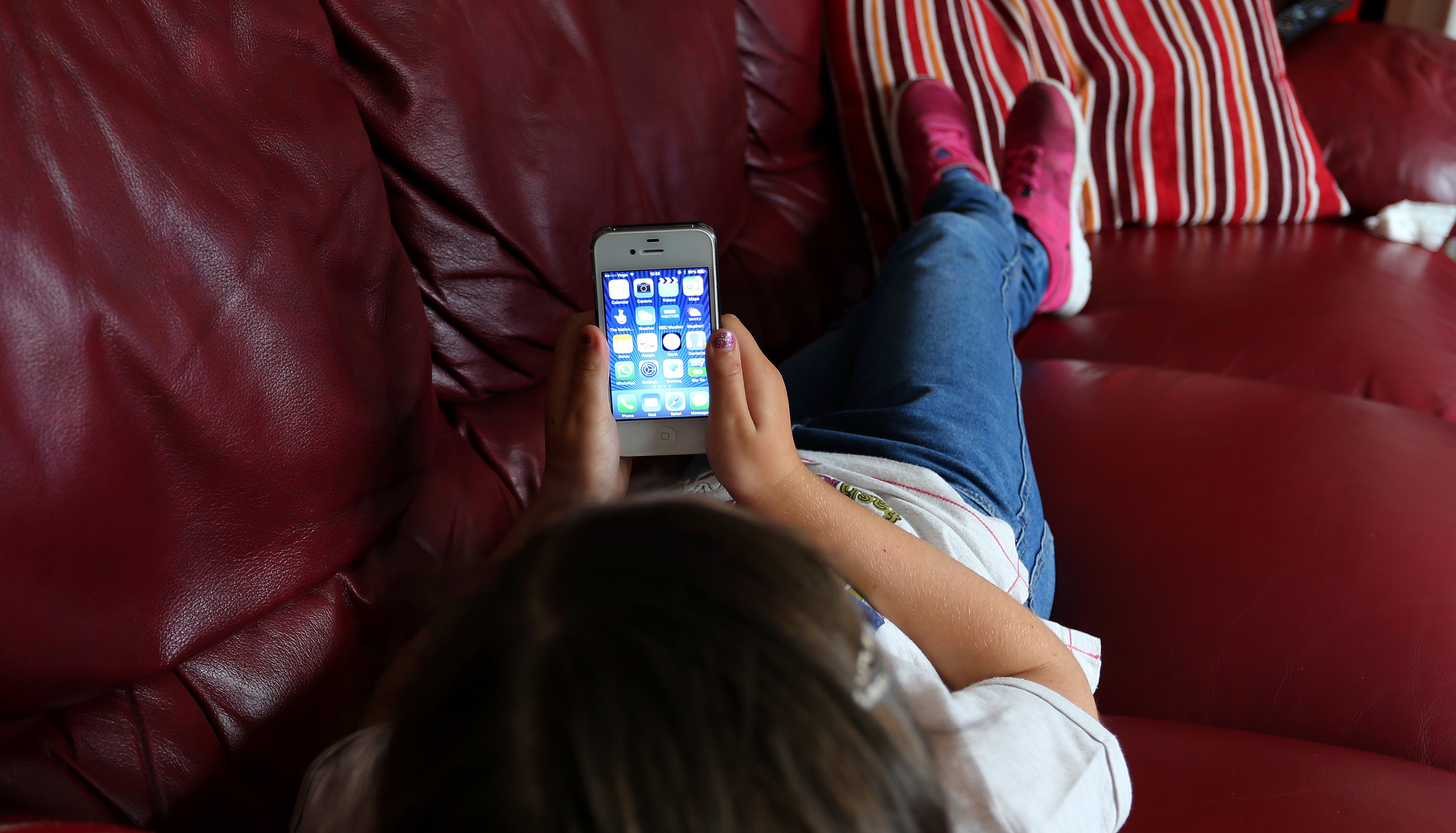Research finds smartphone screen exposure may lead to earlier onset of puberty
Exposure to blue light from use of tablets and smartphones, may alter hormone levels in young children, scientists say.

Your support helps us to tell the story
From reproductive rights to climate change to Big Tech, The Independent is on the ground when the story is developing. Whether it's investigating the financials of Elon Musk's pro-Trump PAC or producing our latest documentary, 'The A Word', which shines a light on the American women fighting for reproductive rights, we know how important it is to parse out the facts from the messaging.
At such a critical moment in US history, we need reporters on the ground. Your donation allows us to keep sending journalists to speak to both sides of the story.
The Independent is trusted by Americans across the entire political spectrum. And unlike many other quality news outlets, we choose not to lock Americans out of our reporting and analysis with paywalls. We believe quality journalism should be available to everyone, paid for by those who can afford it.
Your support makes all the difference.Blue light from phones and tablets may alter hormone levels and increase the risk of early puberty in children, early research suggests.
It is thought that blue light supresses the secretion of melatonin – a hormone that helps control the sleep cycle and is also associated with delaying the start of puberty in young children.
As children get older, their melatonin levels drop naturally to allow the onset of puberty.
Scientists now believe melatonin suppression as a result of using smartphones may risk children experiencing earlier puberty, with implications on future fertility as well.
Their findings come from a rat study presented at the 60th Annual European Society for Paediatric Endocrinology Meeting.
Dr Aylin Kilinc Ugurlu, from Ankara City Hospital in Turkey, one of the researchers involved, said: “As this is a rat study, we can’t be sure that these findings would be replicated in children, but these data suggest that blue light exposure could be considered as a risk factor for earlier puberty onset.”
The researchers used a rat model to see whether blue light exposure had any effect on reproductive hormone levels and the time of puberty onset in female rodents.
The lab creatures were divided into three groups of six and exposed to either a normal light cycle, or six hours or 12 hours of blue light.
Although not conclusive, we would advise that the use of blue light emitting devices should be minimised in pre-pubertal children, especially in the evening when exposure may have the most hormone-altering effects
The team found the first signs of puberty were “significantly earlier” in the two groups exposed to blue light.
They also found that the longer the duration of exposure, the earlier the onset of puberty.
Reduced melatonin levels and elevated levels of two specific reproductive hormones – oestradiol and luteinising hormone – were also observed in rats exposed to blue light.
There were also physical changes in their ovarian tissue, with signs of cell damage and inflammation.
Dr Kilinc Ugurlu said: “We have found that blue light exposure, sufficient to alter melatonin levels, is also able to alter reproductive hormone levels and cause earlier puberty onset in our rat model.”
The researchers said their findings merit further investigation into the potential impacts of blue light exposure on hormone levels and puberty onset in children.
Dr Kilinc Ugurlu added: “Although not conclusive, we would advise that the use of blue light emitting devices should be minimised in pre-pubertal children, especially in the evening when exposure may have the most hormone-altering effects.”
Commenting on the findings, Dr Amy Orben, programme leader track scientist at the MRC Cognition and Brain Sciences Unit, University of Cambridge, who was not involved in the research, said: “The impact of blue light on young people and sleep is still under-researched and unclear, even in humans.
“This study done on rats give us little to no evidence about what would be found in human children.
“Further, pure blue light exposure for long durations is not an accurate portrayal of young people’s screen use.
“This is especially the case for the 12 hours of blue light condition in the study, which would have made a very stressful environment for the rats.”